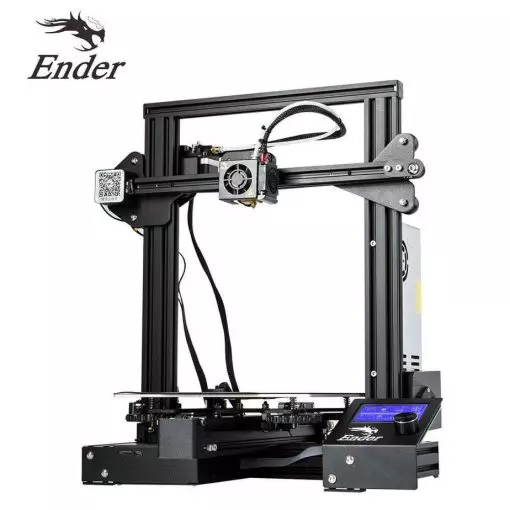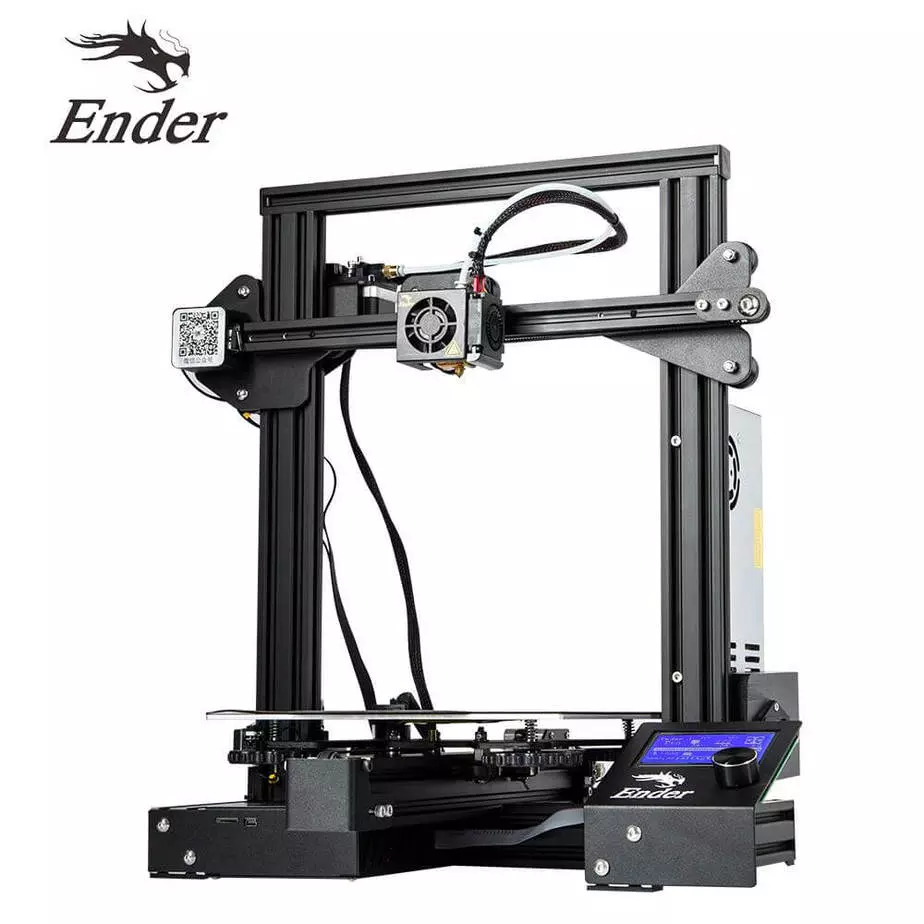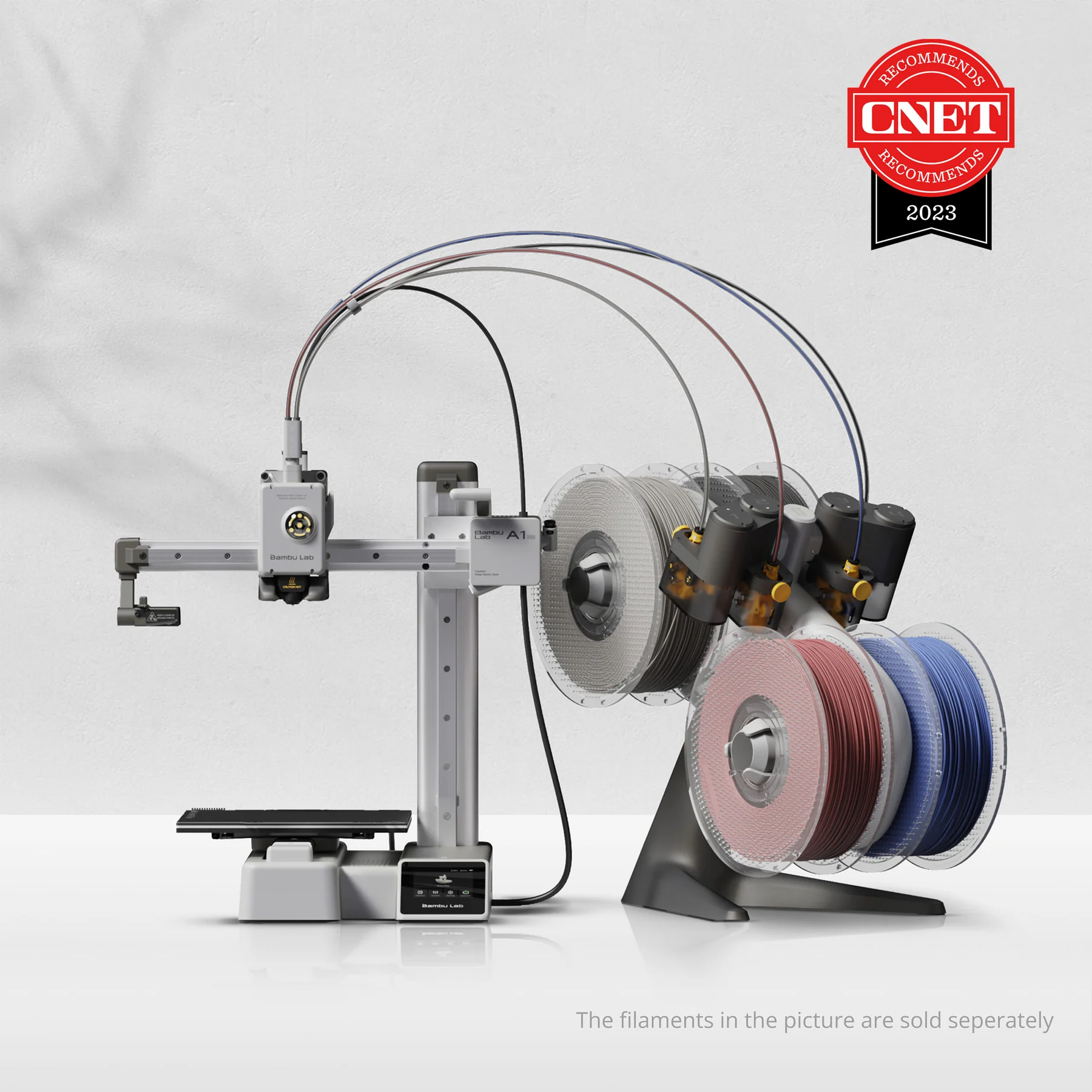Compare Ender 3 vs Ender 3 PRO vs A1 Mini
Comparison between the best 3D printers
Choose the best 3D printer at the best price. The cheapest 3D printers are here.
Buy a 3D printer here with 3D Fila.
 |
 |
 |
|
| Model | Ender 3[BUY Ender 3] |
Ender 3 PRO[BUY Ender 3 PRO] |
A1 Mini |
| Printing Material | Filament | Filament | Filament |
| Estimated price | $210,00 | $258,00 | $549,00 |
| Fabricante | Creality 3D | Creality 3D | Bambu Lab |
| Release Year | 2018 | 2019 | 2023 |
| Print Volume [mm] | 220x220x250 | 220x220x250 | 180x180x180 |
| Printer Size [mm] | 440x440x465 | 440x440x465 | 315x347x365 |
| Weight [kg] | 6,62 | 6,62 | 5,5 |
| Power Loss Recovery | NO | NO | YES |
| Enclosed printer | NO | NO | NO |
| Bed Leveling | Manual | Manual | Automatic |
| Filament End Sensor | NO | NO | YES |
| Bed type | Heated | Heated | Heated |
| Power supply system | Bowden | Bowden | Direct Drive |
| Standard nozzle | 0,4 | 0,4 | 0,4 |
| Maximum Nozzle Temperature [°C] | 255 | 255 | 300 |
| Maximum Bed Temperature [°C] | 110 | 110 | 80 |
| Maximum printing speed [mm/s] | 180 | 180 | 500 |
| Filament holder | YES | YES | YES |
| Camera for supervision | NO | NO | YES |
| Recommended filaments | PLA, TPU, ABS, PETG | PLA, TPU, ABS, PETG | PLA, PETG, TPU, PVA |
| Recommended slicers | Cura, Simplify, Slic3r | Cura, Simplify, Slic3r | Bambu Studio, Super Slicer, Cura, Prusa Slicer, Orca |
| Maximum Resolution [mm] | 0,1 | 0,1 | 0,1 |
| Processor | 8 bits | 32 bits | 32-bit Silenciosa |
| Display | Mono | Mono | Touchscreen 2,4'' |
| Power Supply | 24V / 270W | 24V / 360W Meanwell | 150 W |
| Connectivity | SD / USB | SD / USB | Wifi, Bambu bus, Cartão SD |
| Operating systems | Windows, Mac, Linux | Windows, Mac, Linux | Windows, Linux, Macbook |
| Date of registration in the system | 2021-04-13 | 2021-04-14 | 2024-04-10 |
| Release date | 2018 | 2019 | 2023 |
| Extra features | The Ender 3 V1 is a DIY assembly 3D printer, a sales leader since 2017, standing out for its cost-benefit. With a wide printing capacity, it has a CNC machined structure for precision and stability. It offers high-precision prints with low noise, thanks to its innovative V-profile and pulleys. It has a self-adhesive magnetic platform for easy removal of models and excellent adhesion. The Ender 3 heats up quickly, reaching 100°C in 5 minutes, ideal for agile prints. It includes protection against power failures, allowing you to resume printing after interruptions, saving time and material. | The Ender 3 Pro stands out for its beginner-friendly assembly and easily modifiable structure. With a 350W power supply, it heats up quickly and has a simple application that offers good print quality. However, its motors and fans are noisy, and the interface seems outdated. Assembly is accessible, without the need for advanced techniques, and it has integrated belt tensioners. It includes a detailed guide and supports microSD card and USB. | The Bambu Lab A1 Mini stands out not only for its impressive speed and automatic calibration, but also for its multi-color printing capability thanks to AMS Lite. This innovative system makes multi-color printing easy, making it accessible to everyone. AMS Lite, specific to the A1 Mini, supports up to four different materials simultaneously, providing creative freedom without complications. With comprehensive sensors for energy monitoring and recovery, a camera for timelapses and Wi-Fi control, the A1 Mini and AMS Lite together offer an intuitive and advanced 3D printing experience, ideal for materials such as PLA, PETG and TPU, and designed for simplicity and fast maintenance with quick-change nozzles. |
| Support for multiple colors and materials (AMS and CFS) | NO | NO | YES |
Notes * |
|||
| Cost-benefit | 6 / 10 | 6 / 10 | 7 / 10 |
| Hardware | 0.5 / 10 | 0.5 / 10 | 4.8 / 10 |
| Screen | . | . | . |
| Print volume | 3 / 10 | 3 / 10 | 3 / 10 |
| Performance | 1 / 10 | 1 / 10 | 4 / 10 |
| [BUY Ender 3] | [BUY Ender 3 PRO] |
Conclusion |
| In comparing the three 3D printers—Ender 3, Ender 3 PRO, and A1 Mini—several key differences and similarities emerge that can help guide a purchasing decision. The **Ender 3** and **Ender 3 PRO** models from Creality are excellent entry-level options, offering a cost-effective way to dive into 3D printing. Both are known for their reliable performance and print quality, with identical print volumes. However, they are quite similar in features, such as manual bed leveling, lack of power loss recovery, and only basic connectivity options. While they offer a solid cost-benefit ratio, they fall respectively short in terms of modern features, making them best suited for users who appreciate manual assembly and are ready to troubleshoot and modify. On the other hand, the **A1 Mini** from Bambu Lab comes at a significantly higher price point but introduces several advanced features that enhance the user experience. This printer supports automatic bed leveling and comes equipped with a variety of sensors for filament detection and power recovery, setting it apart from the two Ender models. The A1 Mini’s capability for multi-material printing and improved connectivity options—like Wi-Fi—cater to users looking for innovation and convenience. Furthermore, it matches a high printing speed and includes a touchscreen interface, which is more user-friendly compared to the mono screens of the Ender series. In terms of overall value, the A1 Mini rates more favorably due to its performance and features, though it starts at a higher financial commitment. The Ender series, while less expensive, may require more manual intervention and lacks modern conveniences. In conclusion, if budget is a primary concern and the user is comfortable with manual setups, either the Ender 3 or Ender 3 PRO would be suitable choices. However, for those who prioritize speed, automation, and advanced features, the A1 Mini, despite its higher price, offers a more streamlined and innovative 3D printing experience that could justify the investment. |

